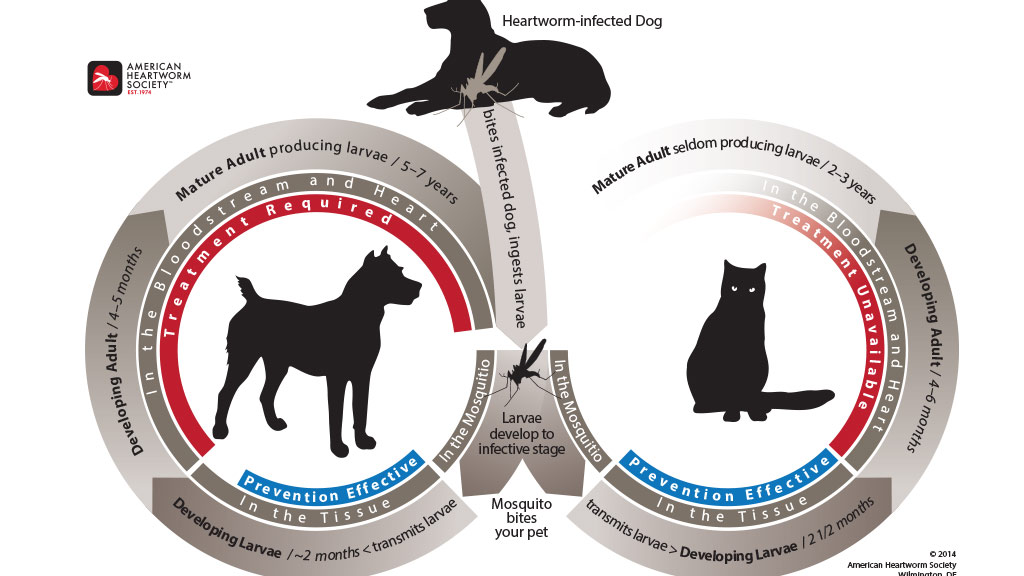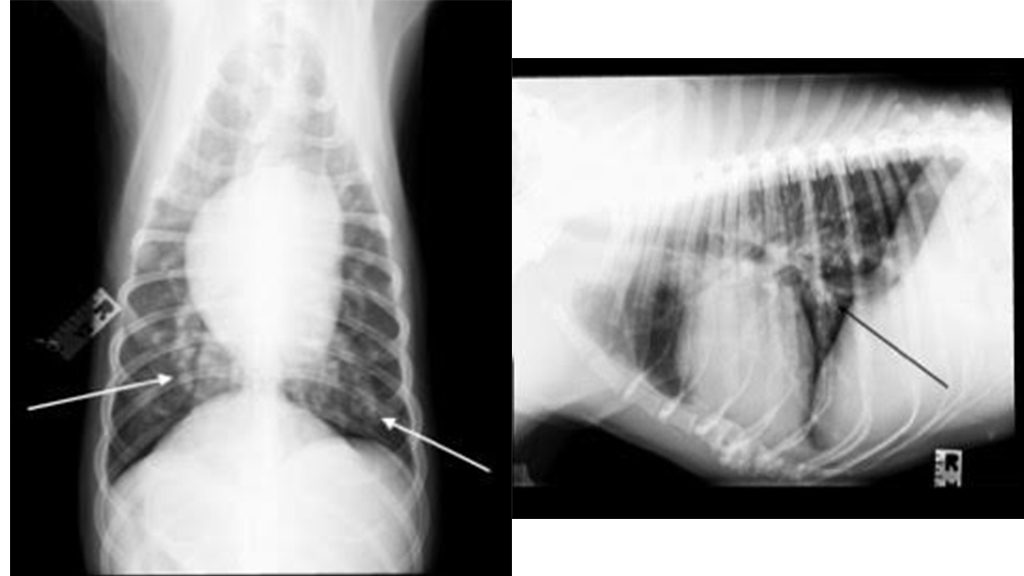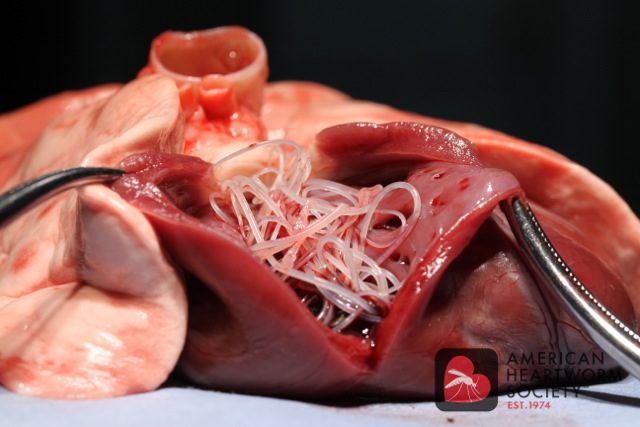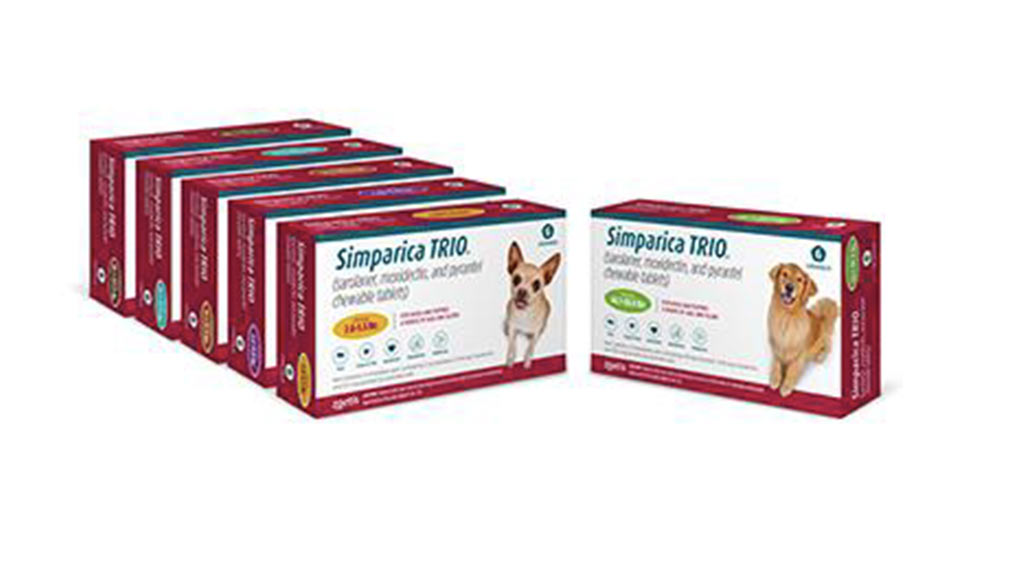
On a remote, Caribbean island, a stray dog is rescued, but only a trip to the U.S., 4 months of special treatments, and 3 doses of arsenic keep her from dying.
The Potcake Dog
If you’ve ever been to the Caribbean, you know that a class of stray dogs, collectively referred to as the Potcake dogs, populates many islands. Though no one is entirely sure, many believe they these dogs are a mixture of hounds and terriers brought to the islands by Americans and Europeans in the 1700s and by dogs brought to the area by the Arawak.
Erin, an upbeat twenty something woman lives as a resident on one of these islands, a postage stamp of land 40 miles east of the Honduras called Utila. It’s there that she works at a diving resort and where she fell in love with one of these resident island dogs.
Dog Tests Positive for Heartworm Disease
She named the dog Vicky who she met while she was working with other locals to help dogs on the island who were infected with heartworm disease. Islanders, like Erin, try to help these dogs get the treatment that they need to beat their sickness, but the cure is problematic. In the case of heartworm disease, getting better can be just as dangerous as getting sick because as the heartworm organisms die in the patient’s body, secondary complications of sepsis, embolism, and anaphylaxis can arise.
In order to understand what next happened, you have to understand a little about heartworm disease. Like Zika and malaria, heartworm disease is transmitted by a mosquito. The mosquito bites an infected patient and during the blood meal ingests microfilaria, the microscopic first stage of heartworm disease. Inside the mosquito, the heartworm goes through two additional stages of development before it is re-injected back into another dog when the mosquito feeds again.

Eat, Love…Poop?
Inside the host (in this case a dog, but cats and even humans can acquire heartworm disease), the heartworm disease molts 2 more times. In its final stage of development, the heartworm is an organism that can be as long as 12 inches in length and live with dozens (sometimes hundreds) of others of its brothers and sisters inside the pulmonary artery. Here they eat, mate and…well…not to be indelicate, but just like all other living creatures they go to the bathroom. The combination of having a large population of worms filling up a major artery, all of them parasitically living off the host, and all of them eliminating in the patient’s body causes the patient to have exercise intolerance and a general feeling of malaise and weakness.
Cure Can Kill Dog
How to kill these worms is not an issue; the medications that are used to treat heartworm disease have been around for years. The problem is, how do you kill the organism without overwhelming the patient’s body with a bunch of dead worms ‘floating’ through his or her circulatory system.
Because Erin had been in touch with Dr. Gittelman at Animal Medical of New City, she understood the risks of medical treatment for Vickie’s heartworm disease and wanted to have the procedure done by Dr. Gittelman and his team who could be responsive if Vickie experienced complications.
How Heartworm Disease is Treated
The first step in treating heartworm disease is a survey of how far along the disease has progressed. Upon examination, Vicky was found to have abnormal lung sounds, to be emaciated (the disease makes patients tired, feeling unwell, and inappetant), to have a chronic, dry cough (secondary to lung problems caused by the heartworms) and radiographs that showed a significant burden of adult worms as demonstrated by a tortuous looking pulmonary artery and an enlarged heart.
The two arrows on the X-ray on the left are pointing at branches of the pulmonary artery, the vessel that transports blood from the heart to the lungs to be oxygenated. The spots indicate that the vessel is misshapen or ‘torturous’, a classic sign of heartworm disease. The x-ray on the right shows the same thing, but from a side view. The shadowy thick line running from the left of the image to the center of the pet is Vicky’s windpipe and the other dark regions are Vicky’s lungs. The small square on the lower right of the image is a marker indicating that this is a view of Vicky’s right side.
Vicky’s medical treatment plan was based on the one prescribed by the American Heartworm Society. Vicky was first placed on a 1-month regiment of doxycycline, an antibiotic often used in the treatment of Lyme disease. Doxycycline has no direct impact on the heartworm itself, but kills an organism inside the heartworm called Wolfbachia, a bacteria that is critical to the heartworm’s well being. Killing the bacteria in the worm, weakens the heartworm and makes it more susceptible to the treatments scheduled later in the medical plan.
The next step is a 2-month regiment of moxidectin, the drug that’s in the same class as the active ingredient in popular heartworm medications like Sentinel. The moxidectin is designed to kill the more juvenile stages of the heartworm disease, especially the earliest stage, the microfilaria or the infants of the adult heartworm. This stage of treatment is designed to eliminate all the worms that are in the stages of growth between when the mosquito first infects the dog and the adult worm itself, plus all the baby heartworms, the microfilaria, that could be sucked up in the next blood meal and go on to infect other dogs.
A microscopic look at heartworm microfilaria
Just Enough Arsenic to Kill The Worms But Not The Patient
Now we come to the most critical stage of the treatment plan. We give the patient a drug called melarsomine, a form of arsenic that is designed to be strong enough to kill the worms, but not so strong as to kill the patient. In this stage of treatment, we’re concerned about a number of things: will the dead worms detach from the pulmonary artery, ‘float downstream’ and clog up smaller arteries or damage the lungs? Will the body have a strong immune response to the dead worms and send the patient into shock? Patients during this stage of treatment must be kept from exercising to reduce the threat of blockage from the dying worms and monitored closely for other adverse reactions to the cure.
A photo of a heart infected with heartworms courtesy of the American Heartworm Society
In the treatment of heartworm disease a total of 3 doses of melarsomine are administered. When treatment is successful, all stages of heartworm disease in the dog’s body have been killed, the dead organisms have been successfully cleaned up by the patient’s immune system and major filtering organs, and the patient is no longer infectious. Heartworm tests subsequent to the treatment should be negative provided the patient has been placed on a heartworm preventative after treatment.
Success!
All better! Vicki returned is back on the island. She’s gained weight, she’s active again, and by the looks of things, she’s reading a book!
With the help of the Animal Medical team, Vicky succeeded in beating heartworm disease. She’s back on the island of Utila looking and feeling better than ever. She’s also on a monthly preventative that keeps her safe from future infections.
How To Prevent Heartworm Disease
In Rockland County, less than 1% of all dogs tested are positive for heartworm disease, but this is due in large part to the widespread use of safe preventatives like Sentinel. Ironically, cats, that typically weather initial heartworm infections well, but who often go on to develop severe breathing complications, show a much higher rate of exposure. In Rockland, roughly 3% of cats test positive for exposure to heartworm disease. Heartworm medications like Revolution that also protect against a number of other parasites are effective at keeping cats safe from infection.
At Animal Medical, we annually test for heartworm disease in dogs with a test that also screens for three significant tick borne diseases. In Rockland County, 2 out of every 10 patients we test are positive for one of the four diseases the test detects. It’s extremely important that pet owners in Rockland County keep their pet on a veterinary approved heartworm, flea and tick preventative and that all dogs are screened annually for disease. The regiment keeps our community safe, our pets safe, and reduces the risk of wider outbreaks.










